The “Documented” Story
“My ancestor was a product of two distinct worlds, the Christian and the Muslim, the Ottoman and the Byzantine, and such a symbiosis was far from uncommon, though Modern Greece’s national mythology demands otherwise.”—Alexander Billinis
Roaming East Roman
By Alexander Billinis
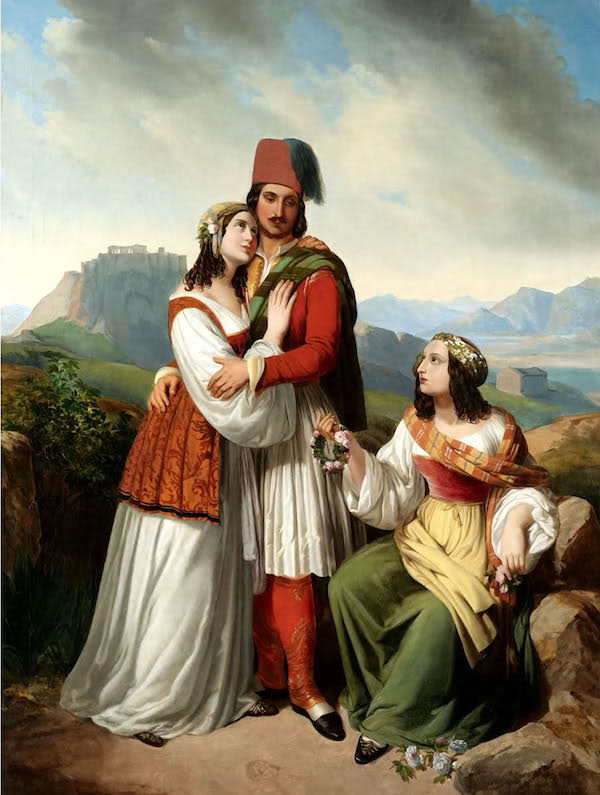
 CHICAGO Illinois (Weekly Hubris)—February 2017—Greeks are a peculiar people, prideful and prickly. Both quick to anger and love, we are generally open minded though, at times, we can be as insular as the most isolated hilltop hamlet. In no place is this duality more evident than when we are discussing our history and origins. We guard these “truths” within walls far stouter than those of Constantinople. Walls, of course, have gates, and may be scaled.
CHICAGO Illinois (Weekly Hubris)—February 2017—Greeks are a peculiar people, prideful and prickly. Both quick to anger and love, we are generally open minded though, at times, we can be as insular as the most isolated hilltop hamlet. In no place is this duality more evident than when we are discussing our history and origins. We guard these “truths” within walls far stouter than those of Constantinople. Walls, of course, have gates, and may be scaled.
Growing up in a multicultural America, my “100 percent Greek” background was a source of pride, something that distinguished me from my more “Heinz 57” American peers, and connected me to nearly 3,000 years of Greek history.
As I grew older, I began hearing intimations that, well, we Greeks might not be “all Greek” —not precisely, at least. It seems that my own grandfather was born with a hyphenated name, and dropped his father’s surname, Meimetis, for his mother’s maiden name, Billinis (itself Venetian in origin, but I digress).
Meimetis, a Hellenization of the common Turkish name “Mehmet,” sounded far too Turkish to Greek ears and, in fact, concealed a secret.
“Our dark secret,” Thia (Aunt) Maria, my father’s sister said, with a twinkle in her eye, a mixture of mirth and, possibly, embarrassment. “You see, My Boy,” she said to her wide-eyed nephew, “In the War of Independence, the Turks retreated to the fortresses, taking captives, while our patriots besieged them.” This part I got, but she had more: “When we conquered Monemvasia,”—a Gibraltaresque fortified rock barely connected to the southeastern Peloponnesian mainland— “the Greeks killed the Turks, but out came some prisoners” (including one she called Oraïa Eleni, or “Fair Helen”) our ancestor, pregnant by an unknown Turk.
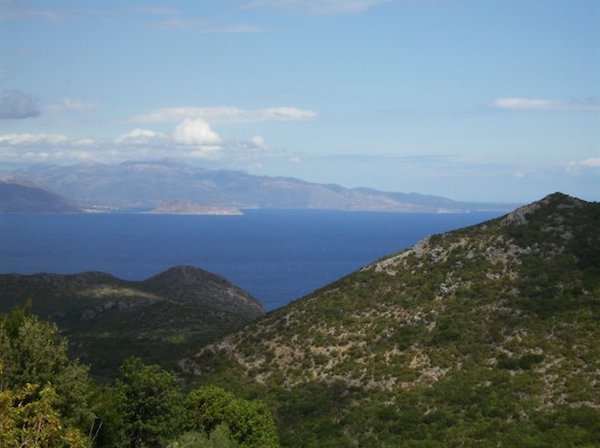
The child, Haralambos, was given the nickname-surname (paratsoukli, in Greek) Meïmetis, a not-so-subtle mark of Turkish parentage. That my aunt conflated our ancestor’s mother with the Homeric Helen of Troy, and the Turk with rapine and ravagement was suitably patriotic, and somehow absolved us from the “shame” of the Turkish legacy. It was not voluntary but rather a metaphor for fair Greece sullied by her generations-long tormentors, the Turks.
Not content with mere stories, I sought to “walk the ground,” myself, to see and to feel the family history. My papou’s (grandfather’s) village is today tiny, with more ruins than standing houses, and situated on the Vatika Peninsula, the southeastern-most digit of the Peloponnese, itself Greece’s southernmost projection. Just south of the village is Cape Malea, the southernmost point in mainland Europe. I went there twice, once as a child with my late father and then, when I lived in Greece, with my wife and son. The version of my grandfather’s grandfather’s story varied a bit, but it was essentially the same, except that my distant great-great-grandfather’s father was no longer necessarily described as a marauding Turk, but possibly as a local convert to Islam—“one of our people . . . of a different faith,” as one villager told me.
The story had changed; still, the patriotic record could not account for him, though, of course, the historical record could. There were Greeks who converted to Islam during the Ottoman period, some coerced, some voluntarily, though all Peloponnesian Muslims met one of three fates in the Greek War of Independence: death, expulsion, or forced conversion. When I stirred the rubble, I found the primary Greek colors of Blue and White overlay not only an Orthodox Cross, but also a mosaic emerging beneath the official hues—a pattern not either Greek or Turkish, Christian or Muslim, but with elements of both.
I wrote about my discoveries in various publications and, slowly, in the ubiquitous online café of Facebook, more and more relatives from my tiny family hamlet appeared, and from all over the world. One “cousin,” a bright young historian named Antonis Kourkoulis, sent me a scanned document from the General State Archives in Greece.

This document was one of dozens listing Neophytes (new members) to the Orthodox Church for the year 1836, just a few years after the chaotic eight-year-long bloodletting known as the Greek War of Independence came to an end. A 26-year-old unmarried man, with his new (Christian) name, Haralambos, is among them, the son of Omer and Argyro . My hands trembled . . . .
It seems, then, that Pappou Haralambos was not the unwanted child of a Turkish rapist, and not exactly a typical Muslim inhabitant of what had heretofore been the Ottoman Empire. No, he was the child of a marriage, a mixed marriage! His father, Omer, was clearly a Muslim and, in the identity structure of the Ottoman Empire, a Turk. (This is of course misleading, because the Ottomans, both liberal from a racial and ethnic viewpoint and bigoted from a religious standpoint, did not recognize racial or ethnic differences, only religious ones.) His mother, Argyro, was just as clearly a Greek Christian.
My ancestor was a product of two distinct worlds, the Christian and the Muslim, the Ottoman and the Byzantine, and such a symbiosis was far from uncommon, though Modern Greece’s national mythology demands otherwise. And while marriage is never a guaranteed marker for romance, it would be equally unfair to say that this particular marriage was any more or less a result of love and mutual passion than any other. Further, given the numbers of neophytes my distant cousins have uncovered, it is clear that such unions were far from uncommon. The phenomenon was in fact unremarkable until it became a reason for killing one another; once the dogs of war were unleashed.
To use a worn cliché, the document’s revelation “completed me.” I felt more connected to my ancestors than ever. I learned that my great-great-grandfather, born in either 1810 or 1803 (different sources supply different dates), fathered a number of children, including my great-grandfather Konstantine, born in 1849. Among his children was a boy born in 1894, Alexandros. Haralambos, born almost 90 years earlier in a different world, with a different religion, would have known this toddler before he gave up the ghost in 1897.
Alexandros was my grandfather, for whom I am named.
![]()
To buy Alexander Billinis’ latest book, The Eagle Has Two Faces: Journeys Through Byzantine Europe, or Hidden Mosaics: An Aegean Tale, click on the book covers below:
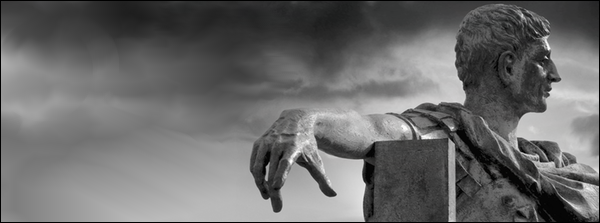
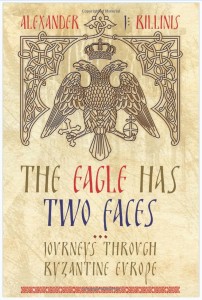
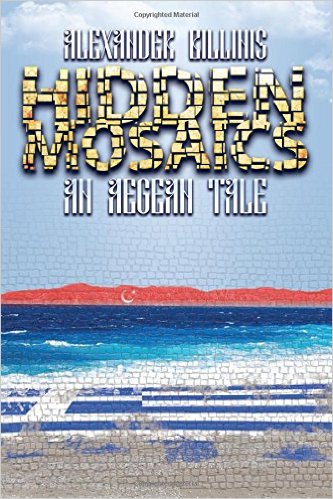
4 Comments
diana
Another wonderful story, Alex. You are so good at describing the multicultural background of this part of the world.
Alex Billinis
Thank you, Diana. Like you I have had the good fortune to live the land I love and write about. There is no other way to do it, I believe.
Maria Potts
Excellent commendably honest
Alex Billinis
Thank you dear Maria. I owe it to those before and after me to be honest.